2020年迪拜世博會意大利館 / Dodi Moss
透明性、材料與植被呈現歷史的宮殿與庭院
設計公司:Dodi Moss
位置:阿聯酋
類型:建筑
材料:飾面板 金屬 金屬線網 綠植 玻璃
標簽:Dubai 迪拜
分類:展覽類建筑 展館 文化建筑
以“美麗凝聚人類”為主題,Dodi Moss和Edoardo Tresoldi一同設計了2020年迪拜世博會意大利館。建筑借助其自身通透性、材料和植物等不同層面,為人們呈現了一條情感之路。Dodi Moss負責領導由藝術家Edoardo Tresoldi, SCA, Progettando, Emanuele Donadel, Studio Tecnico Gaetano Farella, Leo Fr ancesco, Fr ancesco Marzulli組成的設計團隊,在去年秋天由Invitalia舉辦的2020年迪拜世博會意大利館競賽中名列第三,僅次于carlorattiassociati和Gianluca Peluffo & Partners。Dodi Moss作為一家總部位于Genoa的年輕設計團隊,由19位具有特定專業知識的合作成員組成,旨在以創新性的技能應對復雜的設計挑戰。
The project by Dodi Moss and Edoardo Tresoldi for the Italian Pavilion of Expo 2020 Dubai responds to the theme “Beauty unites people” with an architecture that features an emotional path through a layering of transparent, material and vegetable elements. Dodi Moss is leading a group, composed with the artist Edoardo Tresoldi, SCA, Progettando, Emanuele Donadel, Studio Tecnico Gaetano Farella, Leo Fr ancesco, Fr ancesco Marzulli, third place in the competition organized by Invitalia for the design of the Italian Pavilion at Expo 2020 Dubai. This is how Dodi Moss’ design proposal for the Italian Pavilion at Expo 2020 Dubai manifests itself, third place, after those of carlorattiassociati and Gianluca Peluffo & Partners, in the competition launched last autumn. Dodi Moss is a young design company based in Genoa and composed of 19 partners with specific expertise that aims to respond with innovative skills to complex design challenges.
▼意大利館外觀,exterior view of Italian Pavilion
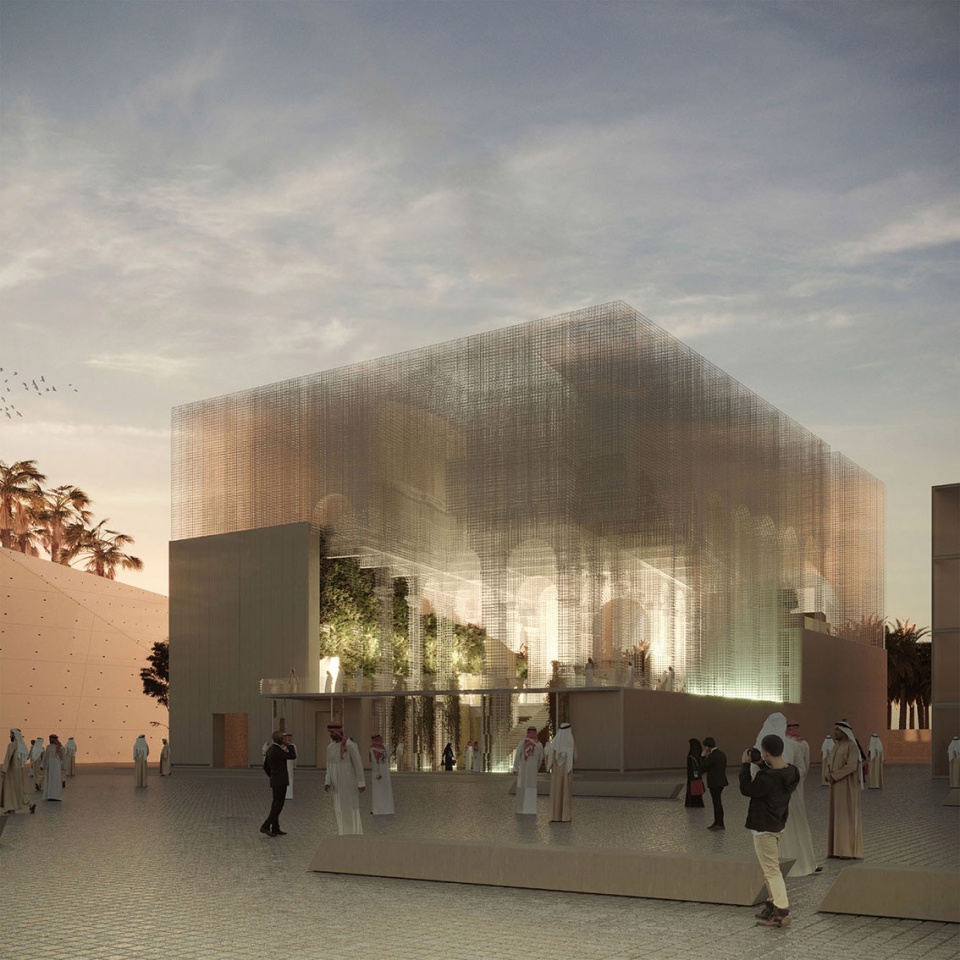
Dodi Moss領導設計團隊與Edoardo Tresoldi合作,SCA作為項目記錄建筑師,團隊提出了一個大體量的設計方案,內部不同的環境以虛空間的形式呼應了意大利的宮殿與庭院。“平行六面體容器”之中的交叉和消減設計手法形成了建筑的多重切割和體量消融,營造了一場游客的情感、觸覺和視覺之旅。設計師說:“透明性、材料和植被這些不同層級的元素描繪出人們某種被破壞的記憶,這種記憶與過去不斷融合,成為我們如今設計的深層根源。在這種情況下,展館不僅表達了意大利的視角,還展現出意大利作為一個根植于千年文化歷史實體的身份意識。”
The team of designers led by Dodi Moss, in collaboration with artist Edoardo Tresoldi and with SCA as architect of record, proposed a large volume from which different environments that stylistically evoke the palaces and courtyards of Italian architecture are subtracted in negative. The intersections and subtractions with the “parallelepiped container” create repeated cuts and volumetric decompositions and accompany visitors on an emotional, tactile and visual journey. “The stratification between transparent, material and vegetable elements -the designers write-codifies some sort of ruin of memory that refers to the continuous synthesis of the past as the deep root of our work today. In this sense, the Pavilion proposes not only the Italian point of view, but the awareness of the Italian identity as a stratified entity that has its roots in a millenary cultural history.”
▼意大利宮殿和庭院為參考的設計概念,design concept with a reference to Italian palaces and courtyards

▼材料與結構圖解,material and construction diagram

建筑由兩個互補特征元素構成:一個作為純粹結構體系的透明體量,代表著一種無形的建筑分層;一個堅固材料構成的底座,作為一個不透明的連續性元素容納展館的所有功能。
An architectural body, shifting from the given lot, is composed of two complementary identities: a transparent volume, a pure structural element, in which references to architectural archetypes stratify impalpably, and a solid, material pedestal, in which all the functions of the pavilion, which constitutes its opaque imprint, are accommodated.
▼建筑由兩個互補的特征元素構成:一個透明體量和一個實體底座,the architecture is composed of two complementary identities: a transparent volume and a solid, material pedestal
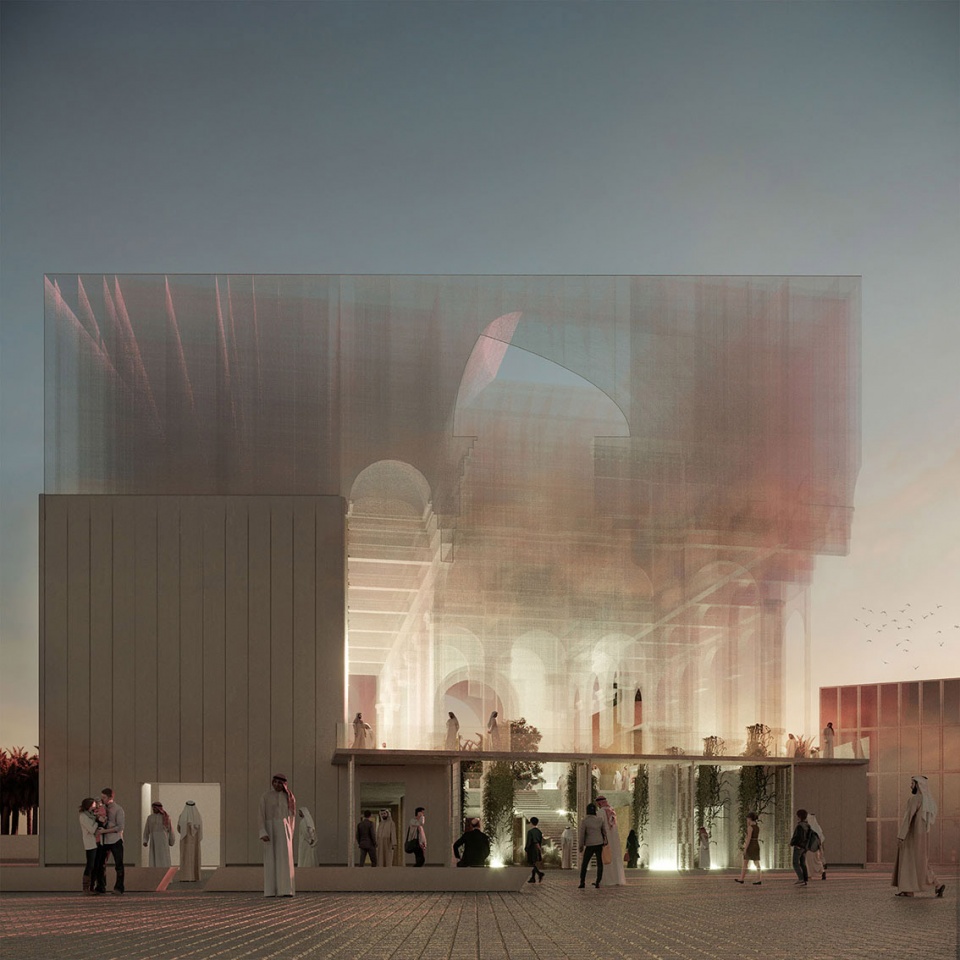
如果在外部能夠看到設計師所塑造的建筑體量,那么內部的建筑線條就會因植物、水、金屬網和玻璃的覆蓋而完全消失,形成一個封閉而漂浮的場景。透明的建筑是一個純粹的結構體系,借助材料的輕盈感和意大利原型建筑來表現自身特點,底座是不透明的實體,兩個元素相輔相成,同時以完全對比的建筑形式相互襯托。展館基座逐漸升高形成一個謹慎保護著內部花園的材料外殼,僅允許人們從外部看到花園的一部分,基座置于壯觀的透明金屬網結構下,讓人聯想到意大利庭院和宮殿的環境與拱頂。
▼外部建筑體量-展館基座逐漸升高形成一個謹慎保護著建筑的材料外殼,exterior of the volume-the pedestal gradually rises to a height, shaping a material shell that jealously guards the garden

If on the outside the volume shaped by man is clearly visible, on the inside the architectural lines disappear completely to be covered by vegetation, water, metal mesh and glass, which form an enveloping and suspended environment. Transparent architecture is pure structural substance, expressed through the lightness of the material and the use of Italian architectural archetypes, the pedestal is its opaque imprint. The two elements are complementary and present each other as negative. The pedestal gradually rises to a height, shaping a material shell that jealously guards the garden, making it visible only in part from the outside, and placing itself beneath the majestic transparent metal mesh structures that evoke the environments and vaults of Italian courtyards and palaces.
▼植物、水、金屬網和玻璃元素構成的入口空間,entrance space with vegetation, water, metal mesh and glass
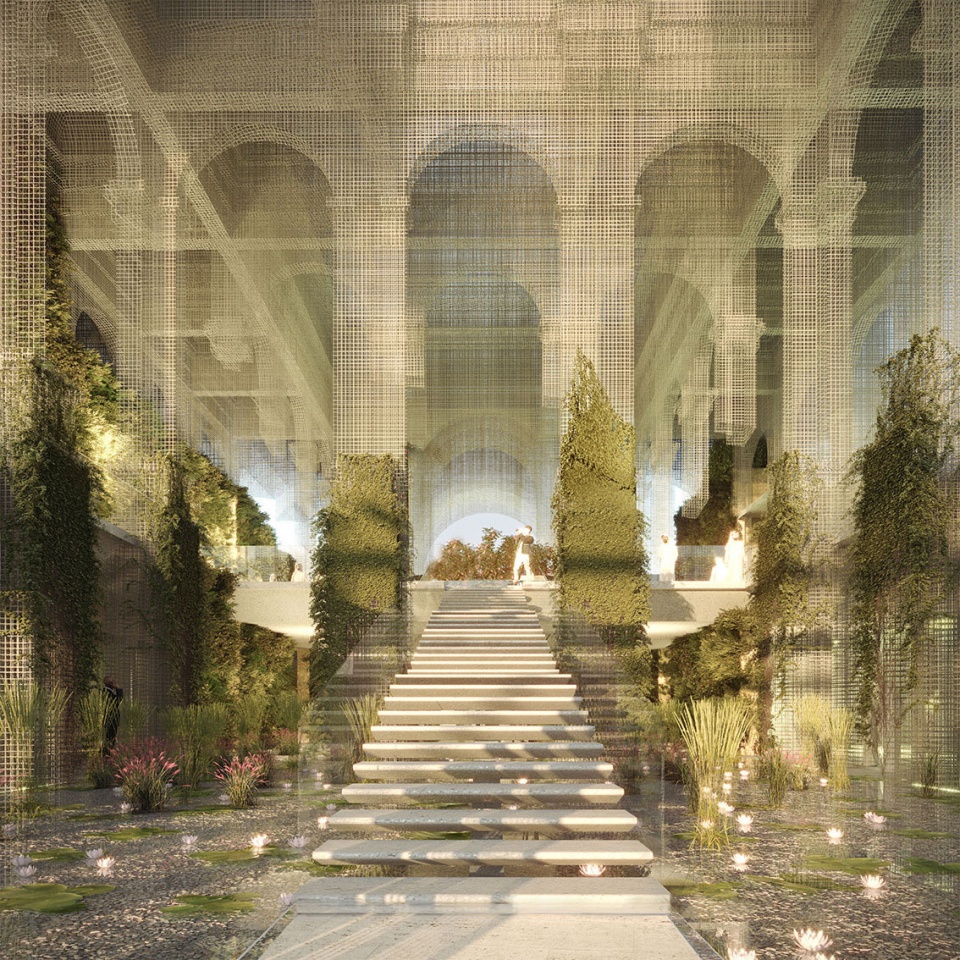
▼基座上的金屬網形成內部具有漂浮感空間,transparent metal mesh structures on the plinth form a suspended environment

堅實與輕盈元素的融合賦予了位于建筑中心的前廊和廣場以生命,意大利花園的重要傳統元素水和小花園滲透于空間之中,構成空間所呼應的文脈和功能。展館仿佛是一場自然與建筑對話的交響樂,在遵循意大利傳統花園法則下形成一個正式的幾何空間,植被在這個透明的建筑上生長成型。金屬絲網結構作為空間主體,讓兩個不同的世界融合在一起,統一于同一個建筑敘事之中。
The fusion between the materic and ethereal elements gives life to the large central spaces-the Prologue and the Square-which, pervaded by water and the garden, key elements of the great tradition of the Italian Gardens, constitute the evocative and functional fulcrum of the project. The Pavilion is a symphonic place where nature and architecture converse-following the original definition of garden-composing a formal and geometric space: it is on transparent architecture that vegetation develops and takes shape. The wire mesh structure determines the reading of the space within a unitary tale in which the two worlds elegantly blend.
▼內部水和小花園呼應意大利歷史建筑元素,the water and garden evoke the great traditional Italian elements
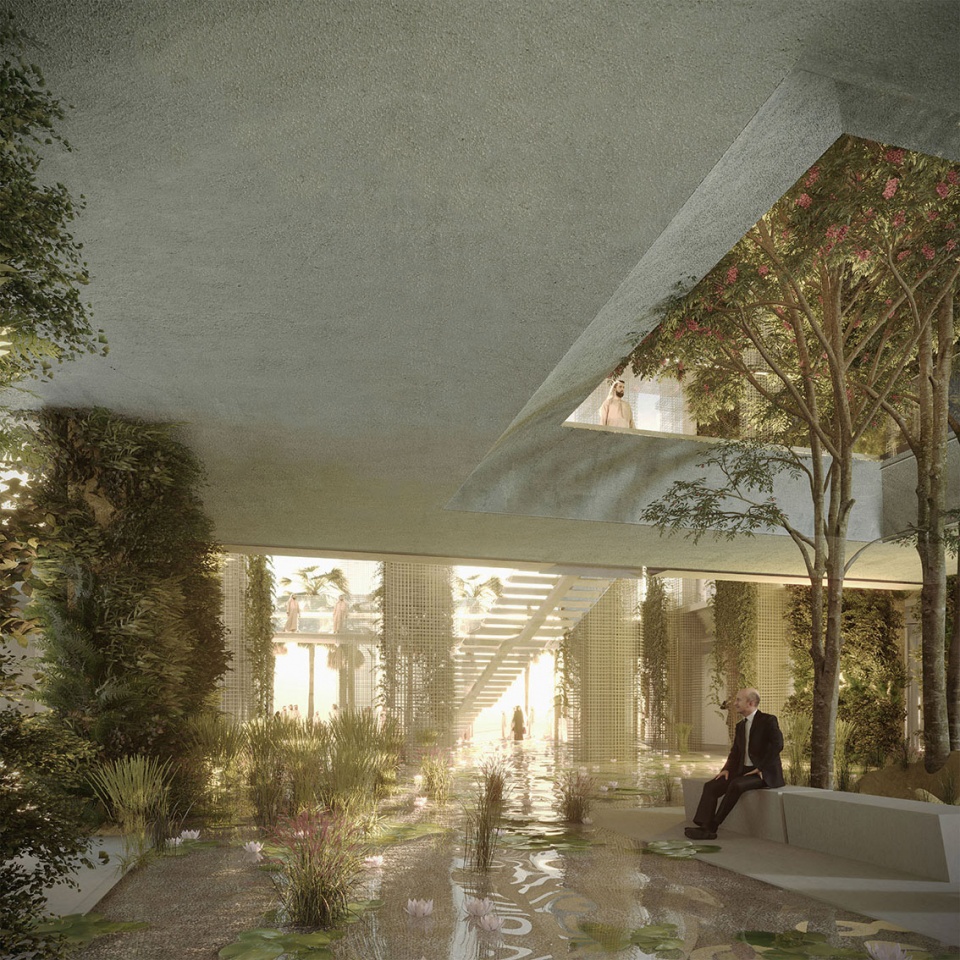
▼一層平面,level 0
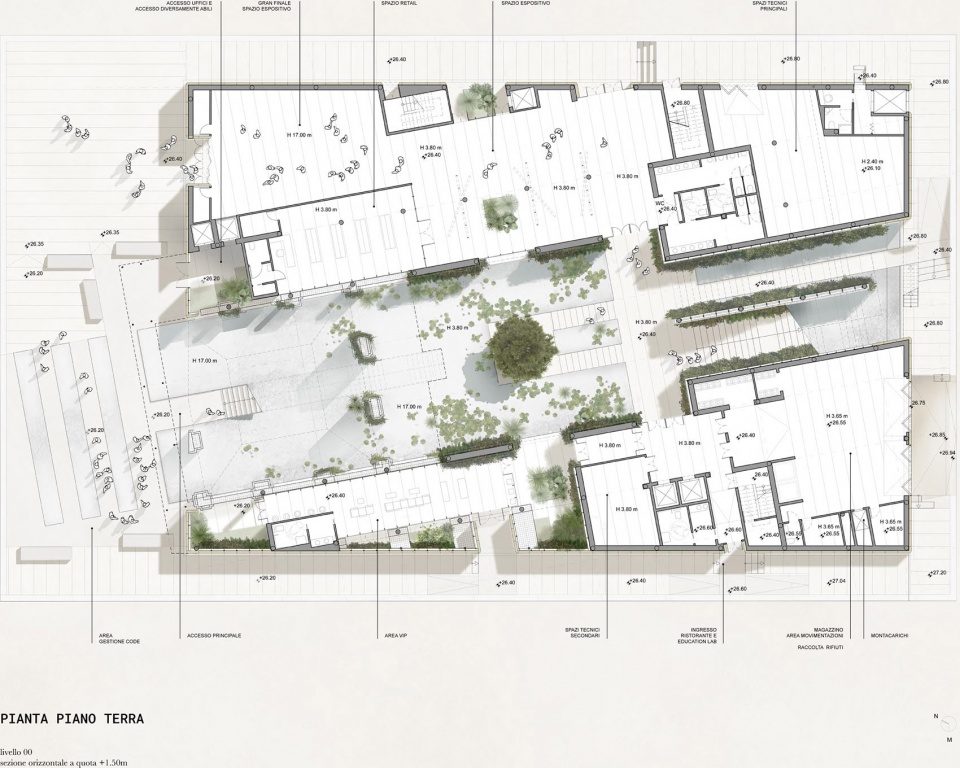
▼二層平面,level 1
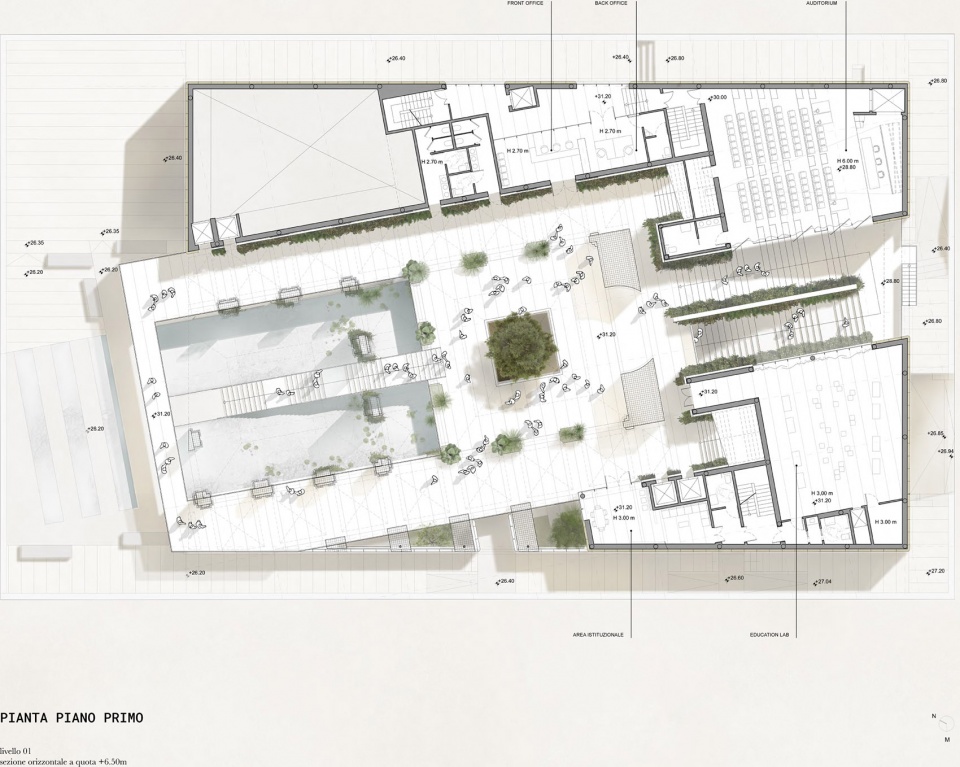
▼立面與植被分析,facade and vegetation analysis
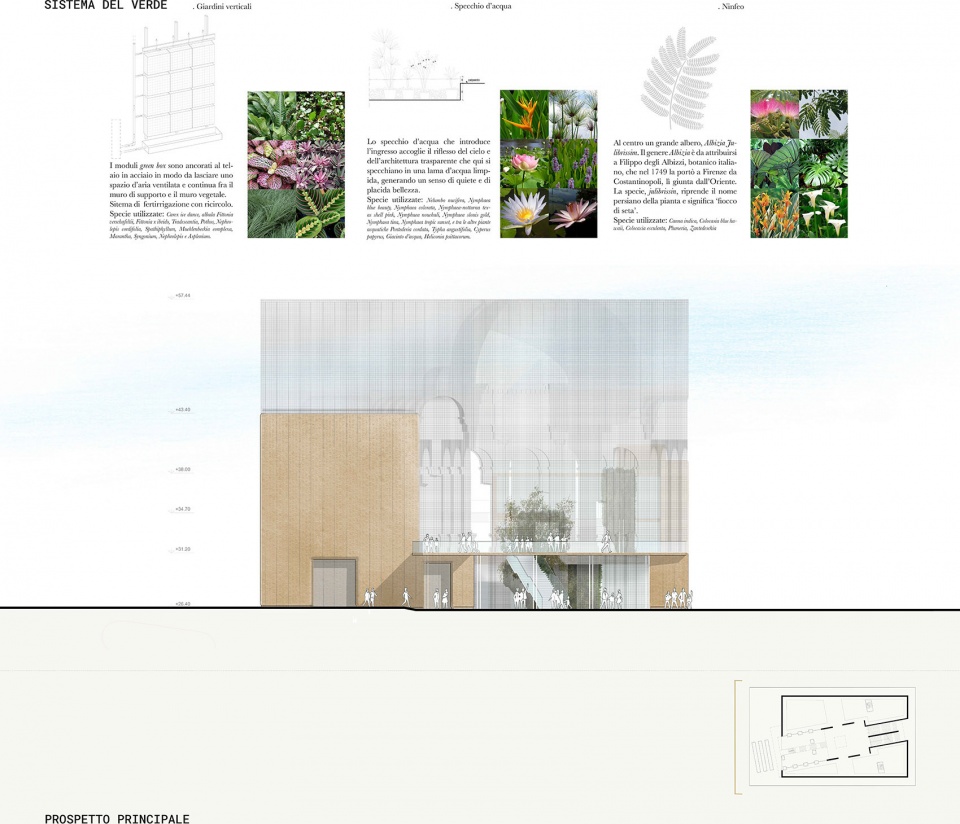
▼立面,facade

▼橫剖面與節點,transverse section and structure
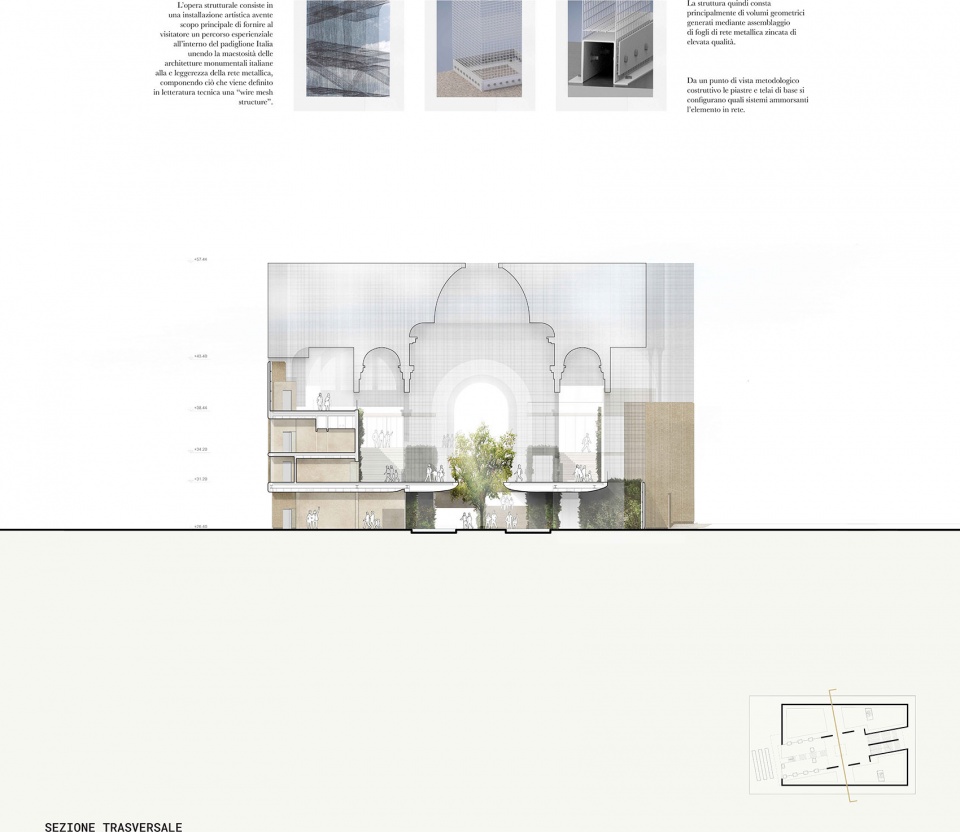
▼縱剖面,longitudinal section

來源:本文轉載自谷德設計網(gooood)
我們重在分享,尊重原創。如涉及作品內容、版權和其它問題,請與本網聯系,我們將在第一時間刪除內容!
- 時間 2019-04-18 /
- 作者 /


